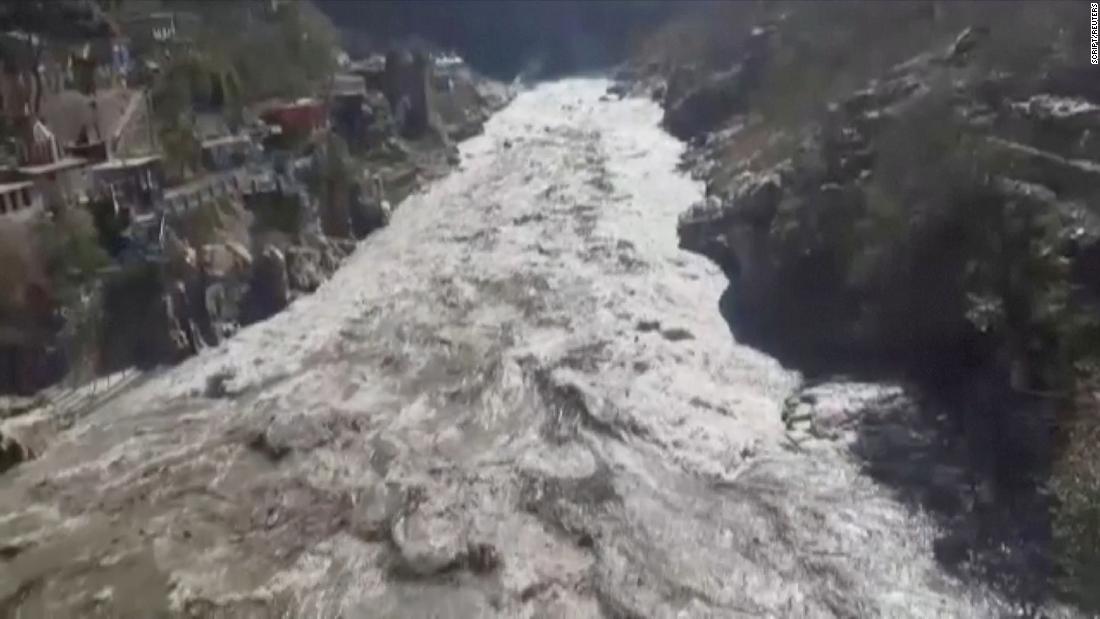Climate Change Behind Excessive Rains, Floods, Landslides Across India
Floods in Maharashtra and north Bihar, rockslides, and cloudbursts in Himachal Pradesh, excessive rainfall in Goa and Uttarakhand’s two districts all collectively indicate the increasing intensity of the extreme weather events across the Indian landscape.
Experts warn that we can no longer ignore the climate change footprint, as it is very much going to be a part of our daily routine. They say the monsoon rains would increase further with an increase in the global temperatures.
“For every degree Celsius of warming, monsoon rains will likely increase by about 5 percent. Global warming is increasing the monsoon rainfall in India even more than previously thought,” according to a recent study, ‘Climate change is making the Indian monsoon seasons more chaotic’ by Germany’s Potsdam Institute for Climate Impact Research.
“It is dominating the monsoon dynamics of the 21st century. Climate change is leading to unpredictable weather extremes and their serious consequences. What is really on the line is the socio-economic well-being of the Indian subcontinent. A more chaotic monsoon season poses a threat to the agriculture and economy in the region and should be a wake-up call for policymakers to drastically cut greenhouse gas emissions worldwide,” the study warned.

Himachal Pradesh reported a landslide on July 25, killing 9 and leaving several injured. Uttarakhand has been reporting a series of landslides ever since the beginning of the month. Since July 22, with the record-breaking rainfall reported along with parts of the Western coast, as many as 164 deaths were reported till July 26 and 25,564 animals died with a total of 1,028 villages affected, according to the Relief and Rehabilitation Department, Maharashtra. It further said: “About 2,29,074 people were evacuated from the flood-hit areas.”
According to experts, deforestation and rapid urbanization in the Western Ghats have led to the warming of the atmosphere which, in turn, increases the capacity of air to hold moisture. This leads to the formation of intense cumulonimbus clouds or vertically developed clouds, bringing some incessant downpour over the region.
In the Himalayas, deforestation and continued construction of hydropower plants, roads, hotels, or homes have led to the loosening of soil, resulting in frequent landslides even with the slightest of rains.

Further, with weather being more sensitive in hilly regions as mountains respond to weather more quickly, the development of cumulonimbus clouds in the absence of strong upper air winds leads to these clouds getting trapped and not traveling far. Such clouds then deplete all the water over a certain area, leading to cloud bursts.
While such extreme events continue to occur, the Intergovernmental Panel on Climate Change’s (IPCC) Fifth Assessment Report (AR) cycle has concluded that human influence on the climate system is “clear”. Since AR5, there has also been an increased focus on regional impacts, with scientists improving their models and understanding of what global climate change impacts will look like on a regional scale.

With various studies predicting more extremely wet years, the threat looms large over people’s well-being, economy, agriculture, and food system. “We are experiencing these extreme weather events not only in India but in parts of Europe and China as well. We have been seeing horrific images of devastation in China and Germany, which show that climate change is here and now.
“It is no longer a developing country’s problem alone, but it is now hitting the industrialized nations such as Germany, Belgium, and The Netherlands,” Research Director and Adjunct Associate Professor, Bharti Institute of Public Policy, Indian School of Business and lead author in the 6th Assessment report of IPCC, Dr. Anjal Prakash said.
IPCC scientists have been warning about these issues for the past couple of years. The latest IPCC report on Oceans and Cryosphere (SROCC) gives us a detailed account of how global warming is leading to a warming up of oceans and how the monsoon patterns are changing rapidly. The Indian subcontinent’s monsoon system has drastically changed due to global warming.
This was originally published on weather.com




